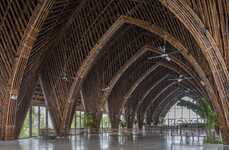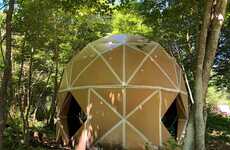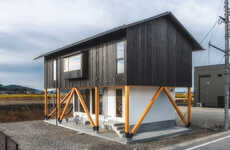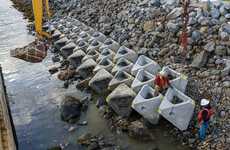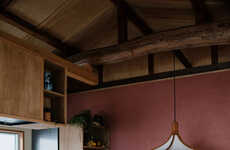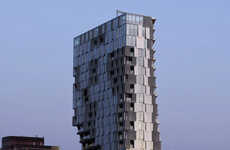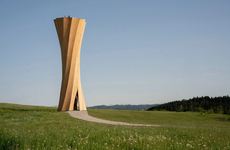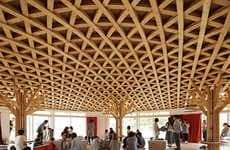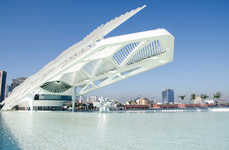
This Newly Designed Japanese Infrastructure Uses Rods to Withstand Shaking
M — April 28, 2016 — Art & Design
References: kkaa.co.jp & fastcoexist
Architect Kengo Kuma has put together an infrastructure design for buildings in Japan to help them withstand earthquakes with a series of carbon fibre rods that surround the space and render the structure quake-proof. This is ideal for the location, since Japan has recently been undergoing a strong and constant stream of tremors.
The building features an exterior shell made from carbon fibre rods that are fastened diagonally to the ground as reinforcement. The rods are strong but simultaneously lightweight and flexible allowing them to absorb shakes form the ground. This allows the rods to keep the building in place if the earth begins to shake unexpectedly, and keep the infrastructure standing. While the rods act as a support system during earthquakes, they also add a contemporary and modular design to the building.
The building features an exterior shell made from carbon fibre rods that are fastened diagonally to the ground as reinforcement. The rods are strong but simultaneously lightweight and flexible allowing them to absorb shakes form the ground. This allows the rods to keep the building in place if the earth begins to shake unexpectedly, and keep the infrastructure standing. While the rods act as a support system during earthquakes, they also add a contemporary and modular design to the building.
Trend Themes
1. Carbon Fiber Infrastructure - The use of carbon fiber rods in building infrastructure is a disruptive innovation opportunity that can revolutionize seismic safety in high-risk areas.
2. Quake-proof Buildings - The concept of making buildings quake-proof is a disruptive innovation opportunity that can introduce new safety standards in construction and architecture.
3. Flexible Reinforcements - The use of flexible carbon fiber rods in building infrastructure is a disruptive innovation opportunity that can introduce new materials and techniques in construction and engineering.
Industry Implications
1. Construction - The construction industry can benefit from new materials and techniques to build structures that can withstand seismic events and ensure safety for the occupants.
2. Architecture - The architecture industry can benefit from new safety standards and design principles that prioritize seismic resistance while maintaining aesthetic appeal and functionality.
3. Engineering - The engineering industry can benefit from new technologies and methods to design and test building infrastructure that can withstand earthquakes and other natural disasters with minimal damage and risk to human life.
4.4
Score
Popularity
Activity
Freshness

